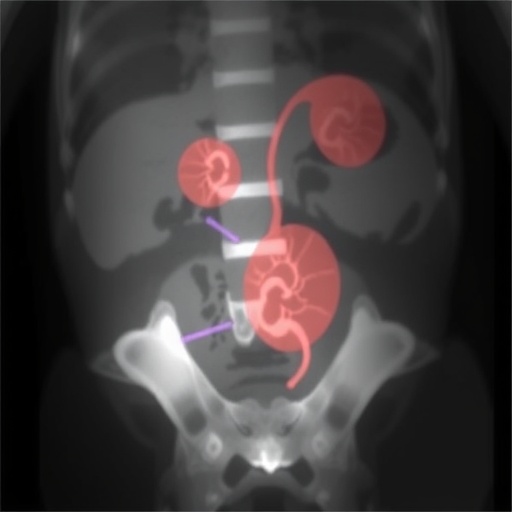Growing up with dogs is linked to a lower risk of asthma, especially if the dogs are female, a new study from Karolinska Institutet and Uppsala University in Sweden shows. However, the researchers found no relation between 'allergy friendly' breeds and a lower risk of asthma. The study is published in the journal Scientific Reports.
Earlier studies have demonstrated a link between growing up with dogs and a lower risk of childhood asthma, but it has not been known whether this association is modified by dog characteristics. In this new study, the researchers have interrogated how variables such as sex, breed, number of dogs or size of dog are associated with the risk of asthma and allergy amongst children raised in a home with a dog during their first year of life.
"The sex of the dog can affect the amount of allergens released, and we know that uncastrated male dogs express more of a particular allergen than castrated dogs and female dogs," says Tove Fall, Senior Lecturer at the Department of Medical Sciences – Molecular Epidemiology at Uppsala University, who led the study with Professor Catarina Almqvist Malmros at Karolinska Institutet. "Moreover, some breeds are described anecdotally as 'hypoallergenic' or 'allergy friendly' and are said to be more suitable for people with allergies, but there is no scientific evidence for this."
The study included all children born in Sweden from 1 January 2001 to 31 December 2004 who had a dog in their home for the first year of life (23,600 individuals). Data from the Swedish population and health data registries were linked anonymously to two dog-owner registries from the Swedish Board of Agriculture and the Swedish Kennel Club. The dogs were classified by sex, breed, number, size and alleged 'hypoallergenicity'.
The researchers then studied the relationship between the dogs' characteristics and the risk of asthma and allergy diagnosis or the prescription of asthma or allergy drugs at the age of six. The statistical analyses controlled for all known confounders that could affect the risk of developing asthma or allergies, such as parental asthma/allergy, geographical location and number of siblings.
Their results showed that the prevalence of asthma at age six was 5.4 per cent. Children with only female dogs at home had a 16 per cent lower risk of asthma than those raised with male dogs. However, living with a male dog did not correlate with a higher risk than living with no dog at all. Children living with two or more dogs had a 21 per cent lower risk of asthma than those who only lived with one dog.
Children of parents with asthma/allergies more often had breeds described as 'hypoallergenic' than children of parents without asthma/allergies – 11.7 per cent versus 7.6 per cent. Exposure to these breeds was associated with a 27 per cent higher risk of allergy but no increased risk of asthma.
"The likely explanation for this higher risk is that families with a history of allergy to furred pets more often choose these dogs, and also that 'allergy friendly' dogs do not in fact release less allergens," says Catarina Almqvist Malmros, Professor at the Department of Medical Epidemiology and Biostatistics, Karolinska Institutet and Consultant at Astrid Lindgren Children's Hospital.
"The finding should be treated with caution as we can say nothing about any actual causality," she continues. "More studies are needed to monitor differences over time, measure the risk of allergies using biomarkers, and take account of the microflora."
###
The study was financed with grants from the Swedish Research Council, the Swedish Initiative for Research on Microdata in the Social And Medical Sciences (SIMSAM), Agria, Forte, the Swedish Research Council for Environment, Agricultural Sciences and Spatial Planning (Formas), the Swedish Heart and Lung Foundation, Stockholm County Council (ALF funding) and the Strategic Research Programme in Epidemiology (SFO-epi) at Karolinska Institutet.
Publication: "Dog characteristics and future risk of asthma in children growing up with dogs". Tove Fall, Sara Ekberg, Cecilia Lundholm, Fang Fang and Catarina Almqvist. Scientific Reports, online 15 November 2018, doi: 10.1038/s41598-018-35245-2.
Media Contact
Press Office, Karolinska Institutet
[email protected]
@karolinskainst
http://ki.se/english
http://dx.doi.org/10.1038/s41598-018-35245-2
Related Journal Article
http://dx.doi.org/10.1038/s41598-018-35245-2




